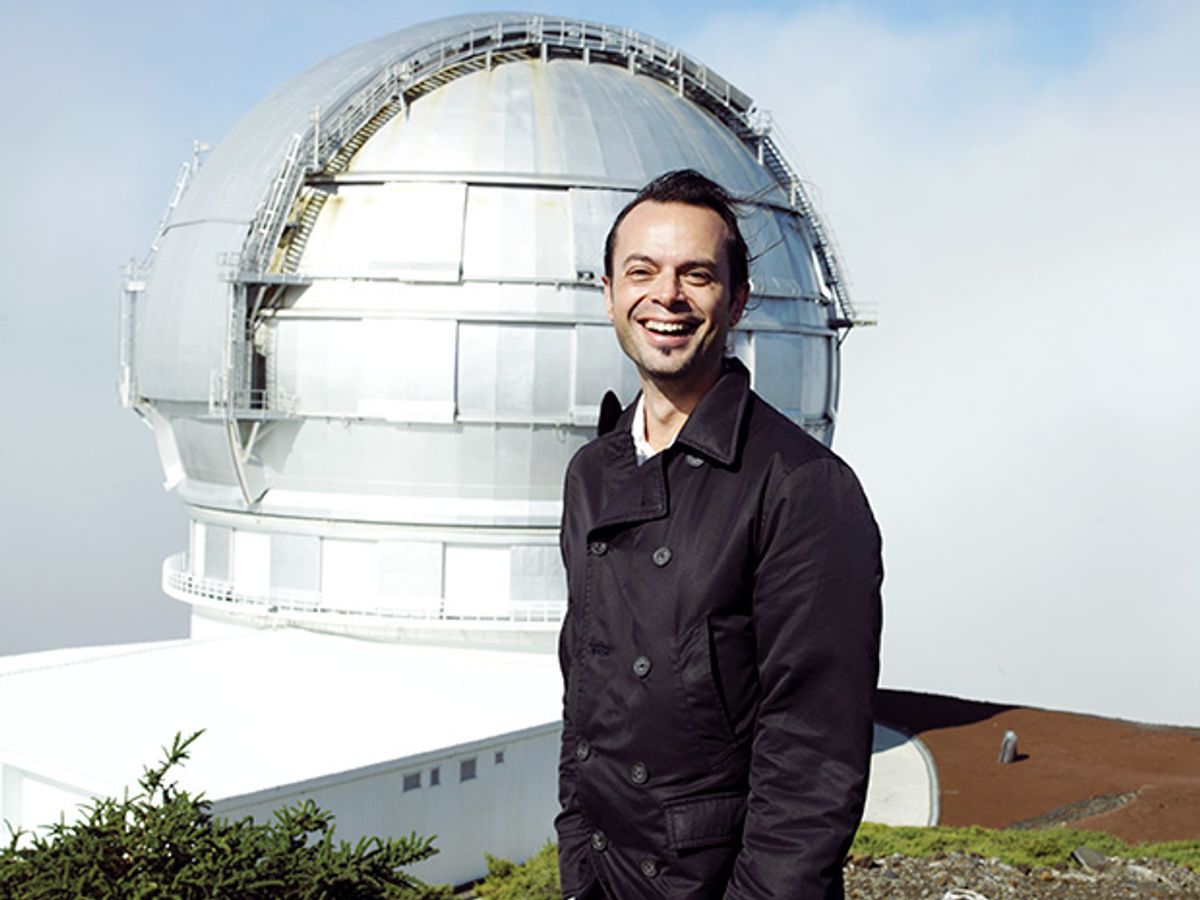Dream Jobs 2010: José Losada, Island Dreams
José Losada writes code for the world’s biggest telescope while cavorting in the Canaries

This profile is part of IEEE Spectrum’s Special Report on Dream Jobs 2010.

Astronomy’s golden age, most astronomers will tell you, is right now. Four centuries after Galileo pointed his telescope skyward, that primordial instrument’s fabulously complicated descendants are giving researchers stunning insights into black holes, the birth of galaxies, even the nature of physics itself. The whole enterprise depends on observatories that cost as much as atom smashers—and need about the same amount of automation.
Providing that automation is a huge challenge. It can also be a blast, if you get to do it for a cutting-edge instrument that happens to be in the gorgeous Canary Islands, as José Losada does. As a senior computer scientist in charge of major systems at the Gran Telescopio Canarias, Losada, 42, writes the code that controls the instrument with the largest light-collecting mirror in the world.
“This is a good balance,” Losada says. “Live here, work there—when you need to install something, you go there to do it.” What he installs is software.
His is a laid-back, small-town world, with a tight circle of friends. At a café in Santa Cruz de Tenerife, the bustling little capital, he encounters several friends from past classes in tai chi and contemporary dance, his greatest passion.
“If I could live life over,” Losada sighs, “I’d be a dancer.” His troupe recently performed in the Audiotorio, a swoopy bird of a building perched on the bay of Santa Cruz. Losada missed that one because he was traveling on telescope business.
We fly to La Palma and find the Gran Telescopio to be worthy of its name. It crouches like an idol in its silvered dome, atop an exhausted volcano, where the air is so dry that it chaps your lips in a few hours. The telescope’s primary, light-collecting mirror, measuring 10.4 meters, is the largest in the world. In its particular sliver of spectrum, the infrared, the Gran peers farther away and thus further back in time than any other such telescope has done, surveying the birth of stars and the tug of black holes—the face of the universe when it was young.
Losada and his colleagues had to write millions of lines of code to manipulate the telescope and its supporting apparatus. First, there's the primary mirror, made of 36 hexagonal glass segments, each one propped and prodded by actuators that keep its shape constant no matter how it’s positioned. It’s called active control, and it’s also applied to the secondary mirror, a plate of beryllium metal that redirects the beam to detectors at several focal points.
“The main thing is efficiency,” Losada explains. “You can manage complex observations in a short period and change the instrumentation depending on weather conditions. If the quality of the sky is not good enough, you can do a different observation quickly.”
We’re talking about writing software from scratch for a very particular project—a green field, not a tilled one. It’d be a dream job even without the surf, the sun, and the mountains.
“Only now are we creating a maintenance group,” Losada says, “to work during the 50-year life of the telescope. We are trying to find ways to recycle some of the software we developed and trade it with other telescope projects.”
Original design, though, is what he relishes. To keep on automating the astronomy business, he’s hoping that his group gets to collaborate on the proposed European space telescope.
Right now, he and his colleagues are tying up loose ends. In July, they attended the telescope’s formal inauguration in the presence of the king and queen of Spain.
Even a crowned head must wear a hard hat inside the dome, but Losada asked me to take mine off before entering the shop where mirror segments are refurbished. It seems that a journalist once nearly hit his hard hat on one of them. It would have cost a million dollars to fix it, Losada says, with a look of mock horror. It turned to real horror as I pulled back, nearly colliding with another mirror. But he grabbed my hand, and the danger passed.
He is, after all, a master of active control.
This article originally appeared in print as “Island Dreams.”
To Probe Further
For more articles and special features, go to Dream Jobs 2010.
